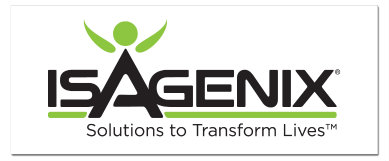Use of alternative therapy for pain treatment increases with age and wealth
ScienceDaily (Apr. 29, 2010) — In a University of Michigan Health System study, 1 out of 3 patients with chronic pain reported using complementary and alternative medicine therapies such as acupuncture and chiropractic visits for pain relief.
Socioeconomic factors — primarily race and age — played a large role in the use of alternative therapy in chronic pain patients, the study showed. Whites used alternative modalities more frequently than blacks and elderly adults had a higher frequency of using alternative therapies than younger adults.
According to the lead author, Carmen R. Green, M.D., U-M professor of anesthesiology and obstetrics and gynecology and associate professor of health management and policy, this pattern may be due to alternative medicine therapies usually attracting individuals with higher education levels and income, or the pattern could be a result of differences in insurance coverage.
Also, as people age, there is a greater chance that they will deal with chronic pain, therefore as age increases, so does the likelihood that people will seek alternative therapies to deal with the pain.
The study which appears in the journal, Pain Medicine, highlights the importance of complementary and alternative medicine, its increasing usage, its economic impact, and concerns about safety and effectiveness.
To track the link between pain and alternative medicine, Green and S. Khady Ndao-Brumblay, PharmD, MSc, doctoral student in health management and policy at the U-M School of Public Health, looked at the ethnic and racial disparities in treating chronic pain in 5,750 adults over a six-year period.
Socioeconomic characteristics, medical history, physical and social health characteristics and pain-related symptoms in both black and white adults with chronic pain were collected with the Pain Assessment Inventory Narrative to assess the treatment methods.
The types of practitioner-based alternative therapy examined included manipulation therapy such as chiropractic or physical therapy procedures, biofeedback — instruments that control the heart rate, blood pressure and brain waves for relaxation purposes — and acupuncture.
These three alternative medicine therapy services were used most often by people with chronic pain, but who uses the therapy depends on the type of modality.
“This research may provide important new insights into the use of alternative therapies for people living with chronic pain. It helps us understand more about who is using CAM therapies, and also prompts a discussion on how these methods work and on whom they work best,” Green says.
Of those observed, 35 percent reported using at least one form of complementary and alternative medicine therapy with 25 percent using manipulation techniques, 13 percent using biofeedback and 8 percent acupuncture.
Green, U-M pain medicine physician and anesthesiologist, says complementary and alternative medicine therapies can be beneficial in treating pain, but further studies are needed to determine just how effective they are and how great the risks and benefits are. Since alternative therapy is often used in combination with other methods, such as regular physician visits and traditional medications, she warns patients should inform their doctors when using these therapies.
“It’s helpful for physicians to know that patients are using these therapies so that we can minimize any risks or side effects associated with them,” Green says.
Because chronic pain has been found to double the odds of seeking alternative services, this along with decreased access to and negative perceptions about pain treatment, may be one of the primary reasons for seeking this type of therapy over conventional medicine. However, more research needs to be done to confirm this.
“Unfortunately patients are often reluctant to share information regarding alternative therapy usage with health care providers, but discussions and awareness of alternative therapy use in pain patients may improve the quality of pain care and patient safety,” Green says.
Editor’s Note: This article is not intended to provide medical advice, diagnosis or treatment.
Story Source:
The above story is reprinted (with editorial adaptations by ScienceDaily staff) from materials provided by University of Michigan Health System, via EurekAlert!, a service of AAAS.
Journal Reference:
Ndao-Brumblay et al. Predictors of Complementary and Alternative Medicine Use in Chronic Pain Patients. Pain Medicine, 2010; 11 (1): 16 DOI: 10.1111/j.1526-4637.2009.00767.xNote: If no author is given, the source is cited instead.



Hi there. We were reading your posts. They are a superduper read thank you!!